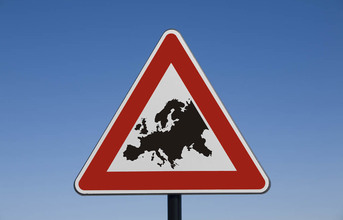
Richard Hubbard, online editor of International Adviser
European insurers are unlikely to be able to generate sufficient investment returns in future to meet the guaranteed rates offered on many of their regular savings products, according to a new survey by Standard Life Investments.
The survey, which involved face-to-face interviews with senior officers from 56 different European insurers covering €2.4trn (£1.7trn, $2.6trn) in assets, found the European insurance industry was experiencing a period of unprecedented change, with guaranteed savings products under most pressure due to the current low-return environment.
Historically, insurers have been able to buy long-duration bonds at higher yields than their guaranteed rates to policyholders. Even in 2015, past purchases of long-duration fixed income meant that current book returns were higher than actuarial target returns based on insurers’ liabilities.
Low yield problems
“The issue is that, after the global financial crisis, insurers have been buying long and short-duration bonds at yields lower than their required returns,” SLI said.
It found current annual book returns among the survey respondents was 3.3% versus target returns of 2.7%. However, expected future returns are forecast at 2.4%.
“The expected future annual return (based on existing investment strategies) of 2.4% is below the 2.7% respondents need to meet future policyholder requirements (based on current guarantee levels),” it said in a statement.
In countries like Germany, the OECD has estimated that the average weighted guaranteed return of life insurance contracts was 3.12% in 2013, and products with a guaranteed return of 4% accounted for 24% of the market.
Risk appetite rises
The problem European insurers face with these guaranteed savings products was also behind a move to increase their risk appetite.
The survey found half of the respondents expected to reduce sovereign fixed income exposure, while over 60% expected to increase allocations to real estate and/or alternative investments.
However, the survey highlighted a ‘north/south’ divide across Europe on asset allocation, with southern European countries having more confidence in existing investment strategies due in part to higher domestic yields on their sovereign fixed income.
In the UK and Ireland, there was a strong focus on exploiting illiquidity premia rather than credit risk, with infrastructure and real estate debt, or diversified fixed income, cited as attractive sub-asset classes for optimising return and capital efficiency.
Outsourcing to grow
Outsourcing of asset management activity was also found to be increasingly attractive, though the respondents expressed concerns about fund management capacity and the number of asset managers able to meet complex needs of insurers.
Nevertheless, 44% of European insurers in the survey are looking to outsource management of one or more asset classes.
Solvency II was another important factor driving insurers’ asset allocation considerations. Around 73% of insurers indicated that the forthcoming EU Directive is affecting the way they design investment portfolios as the taking of asset risk now requires appropriate risk-capital and a fuller understanding of the risks being taken.
Insurer business models and profitability were also reported to be under pressure from a structural shift away from guaranteed savings to unit-linked structures. SLI said about 43% of insurers stated they were unable to price new guaranteed investment products at competitive rates.
“European insurers’ business strategies and traditional business models are being fundamentally challenged due to the combination of the long-term low return environment, Solvency II and the ongoing need to deliver on promised guarantees,” said Stephen Acheson, executive director of Standard Life Investments.
“The survey highlighted a clear theme of insurers looking to outsource to the external asset management industry. However, it also highlights a belief among insurers that the number of credible outsourcing partners is declining."
Standard Life Investments had 69 insurance clients investing balance sheet assets in over 20 countries, representing assets under management of £137bn at 30 June 2015.
